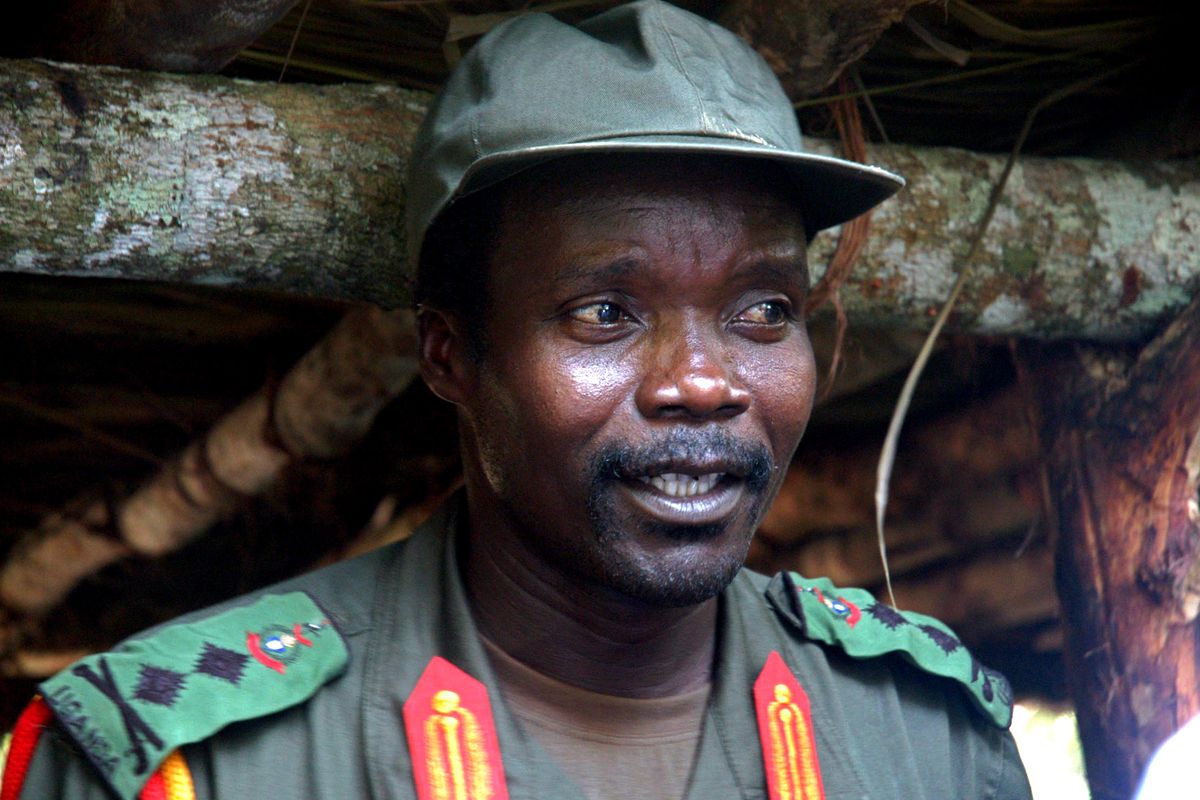Fugitive in spotlight
Millions watch video decrying African warlord

Even after decades of well-documented murder and plunder, even after the International Criminal Court indicted him and a U.S. president dispatched a special forces team to help catch him, African warlord Joseph Kony remained largely obscure to the West.
That changed with startling swiftness this week, with the viral proliferation of a smoothly produced 29-minute video, “Kony 2012,” that taps the power of social media in an effort to make the fugitive leader of the Lord’s Resistance Army a meme of misery.
By Thursday, three days after its release on YouTube, the video had been viewed 40 million times, fueled by Tweets from celebrities including Rihanna, Oprah Winfrey and P. Diddy.
“Can I tell you the bad guy’s name?” Jason Russell, co-founder of the San Diego-based nonprofit Invisible Children, asks his young son in the video. Russell then shows him Kony’s photograph, and explains to viewers that the LRA abducts children for use as sex slaves and child soldiers. Then he inveighs against the possible withdrawal of U.S. troops sent by President Barack Obama last year to help African troops catch Kony.
The video marks the latest example of how social media have transformed political activism – a phenomenon seen in events including the “Arab Spring” uprisings. The video’s popularity reflects the power of Facebook and Twitter to galvanize a generation moved by vivid, instantly downloadable images and the entreaties of celebrities.
But it reflects, too, how quickly the same online universe can erupt with countermessages. No sooner had “Kony 2012” gone wildly viral than critics on the blogosphere were attacking it for a host of perceived sins, from sentimentality to Western arrogance to dangerous oversimplification.
“The war is much more complex than just one man called Joseph Kony,” Ugandan journalist Rosebell Kagumire argued in a YouTube video, describing the Invisible Children video as the work of “an outsider trying to be a hero, rescuing African children.”
The Invisible Children group was started in 2005 by three California film students moved by their experiences with the victims of war in Africa. It occupies a full floor in a San Diego high-rise where, on Thursday, some 30 college-age workers were answering phones in an office resembling a boiler room. The phones rang persistently with people asking how they could help.
“We’re at a place of deep emotion, humility and thankfulness that this is finally catching on,” said Lauren Bailey, the movement coordinator. Each semester, she said, the group sends out about 100 college interns to spread the word about Kony, whom she called “the worst living criminal in Central Africa.”
The massive response to the video has stunned better-known humanitarian groups that have worked for years to draw attention to Kony’s atrocities. “We didn’t get celebrities going onto Twitter,” said Anneke Van Woudenberg, of Human Rights Watch, which produced its own video on the subject.
Last October, Obama sent a 100-man special forces team to Uganda with orders to train the central African country’s military to pursue the Lord’s Resistance Army and specifically to help them capture Kony. Three other countries in the region – Central African Republic, Congo and South Sudan – are receiving U.S. aid for their help in the effort, and the American troops are also now employed in those countries. Pentagon officials insist the U.S. team is not conducting its own operations to capture Kony.
State Department spokeswoman Victoria Nuland suggested the team was not going to be pulled out soon. “They’ve only been in for a couple of months, and we consider them a very important augmentation of our effort to help the East and Central African countries with this problem,” she said.
Mamood Mamdani, a Columbia University professor who has studied the region, said some Ugandans worry the video could actually trigger further bloodshed. “We all know that the inevitable result of military activity is that civilians get hurt,” he said, cautioning against the influence of “millions of well-meaning and well-intentioned but ill-informed people.”
Some, such as Joshua Keating on ForeignPolicy.com, stressed that Kony hasn’t been in Uganda for six years, and is now believed to be in the Central African Republic. “Unfortunately, it looks like meddlesome details like where Kony actually is aren’t important enough for Invisible Children to make sure its audience understands,” he wrote.
Nuland, on the other hand, praised the video. “Certainly we appreciate the efforts of the group Invisible Children to shine a light on the horrible atrocities of the LRA.”